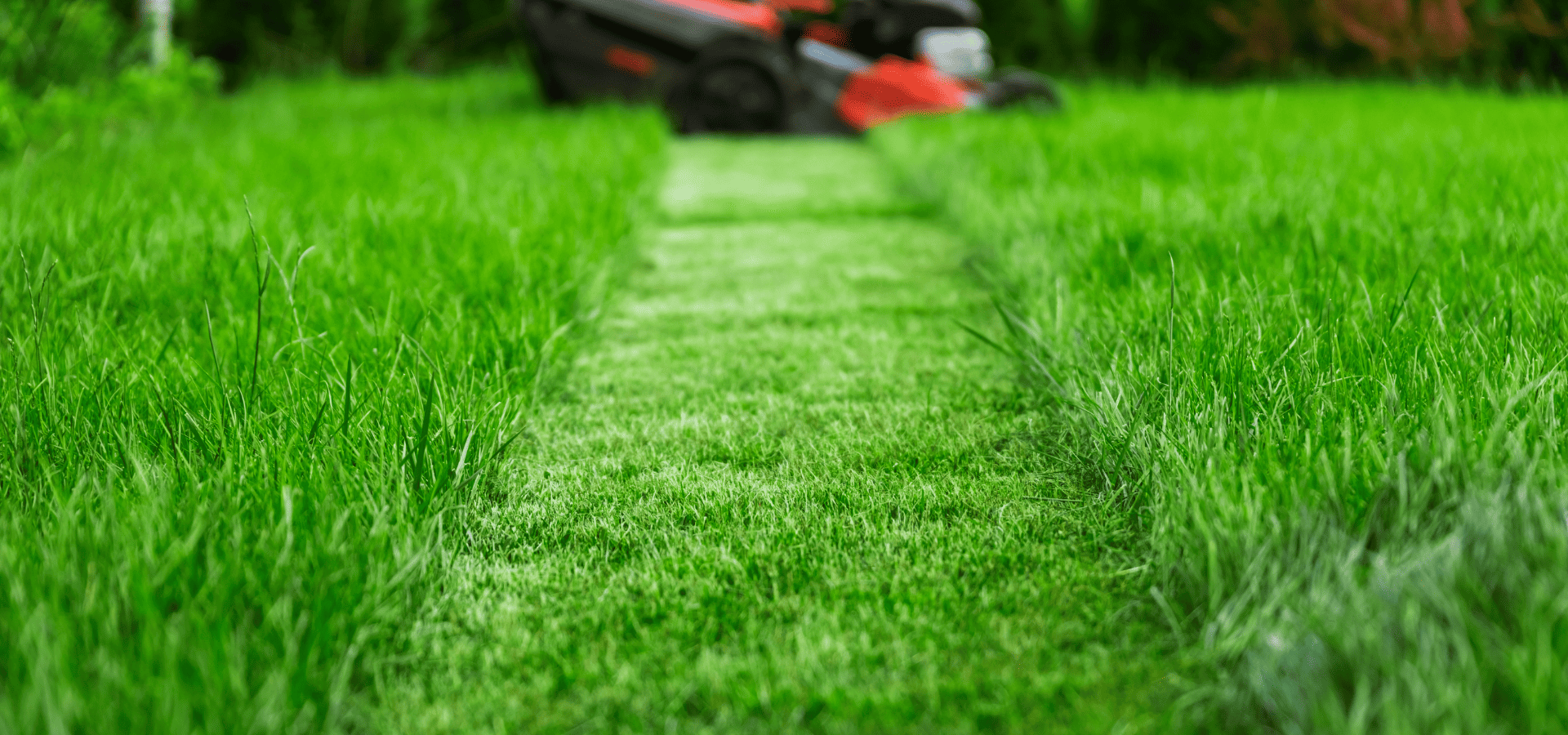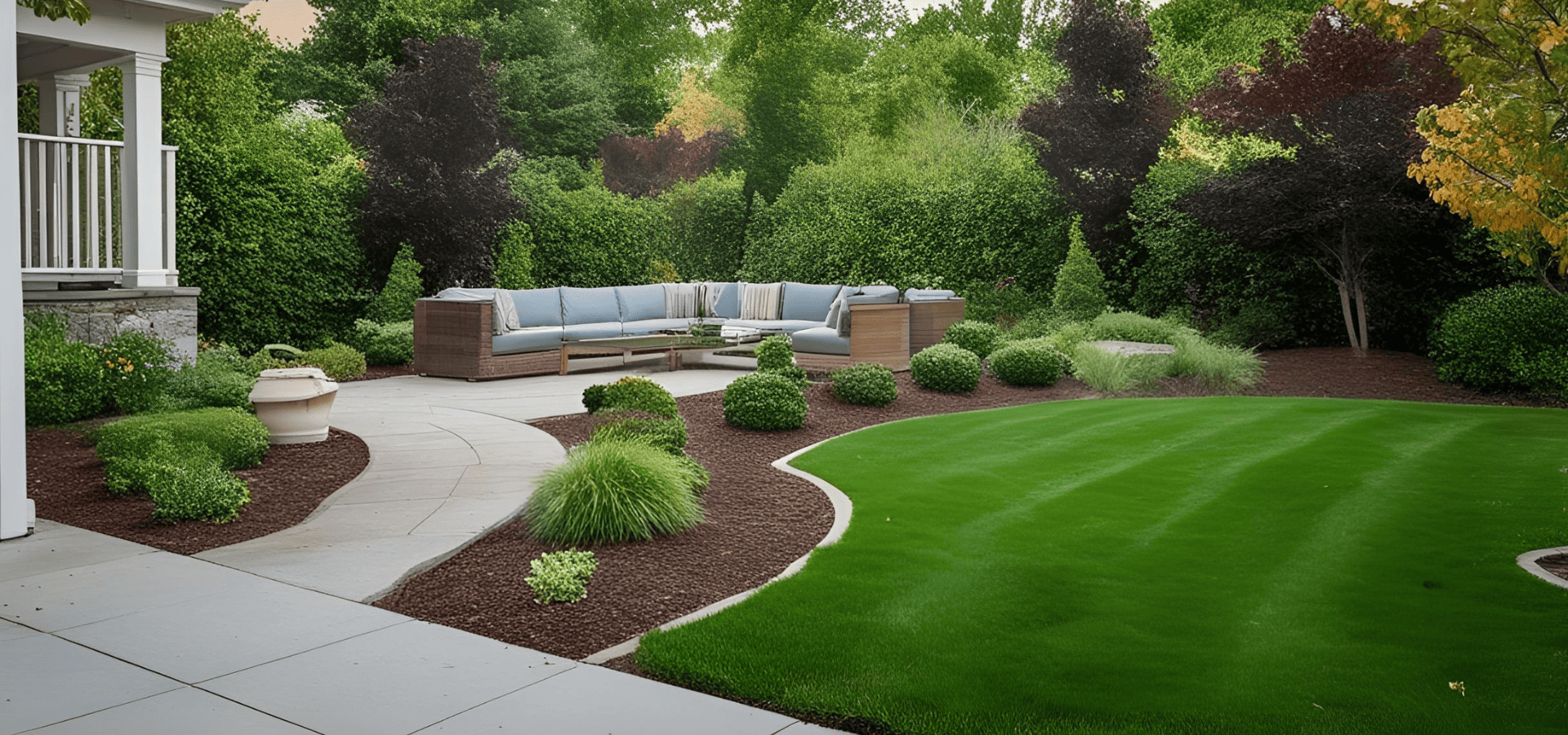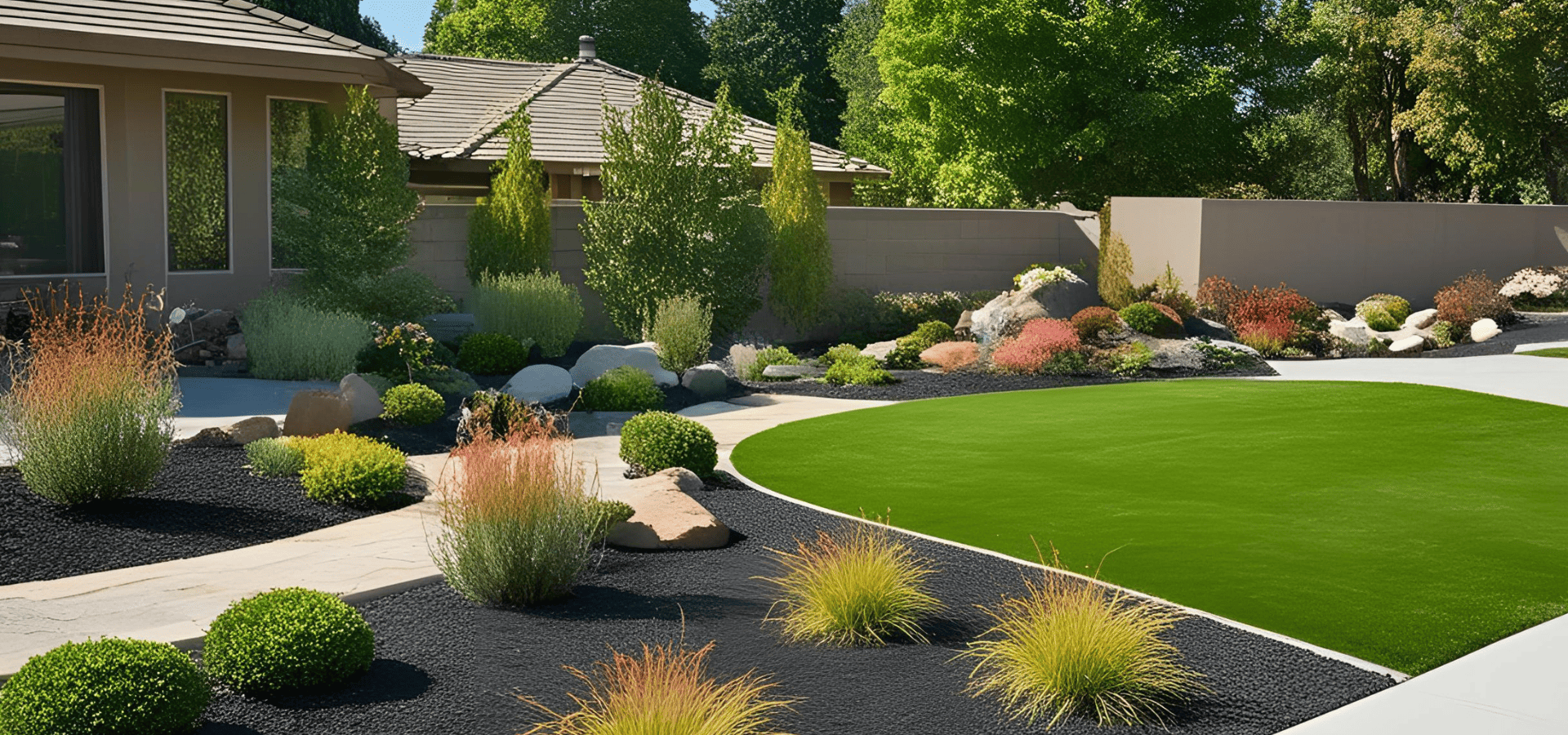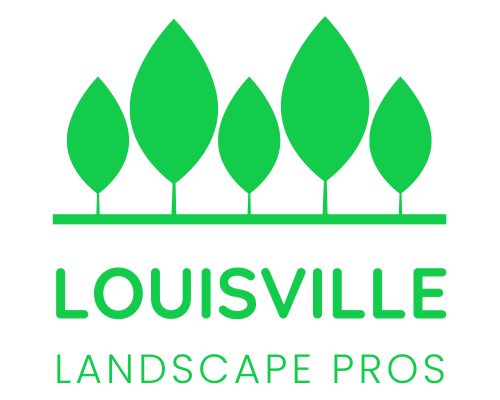Rain Garden Landscaping Guide For Louisville
In Louisville, rain doesn’t just fall-
It pours. And usually in buckets.
Sometimes it rains in long, lazy stretches; at other times, it’s in sudden, theatrical bursts that leave sidewalks steaming and gutters overwhelmed. But regardless of what style the buckets come in, the result of the buckets for homeowners is essentially constant soggy yards, flooded corners, and annoying runoff. Put short, the rain is a real problem for Louisville homeowners.
Enter the rain garden: a low-key, low-maintenance landscape feature that nullifies these issues.
A rain garden quietly intercepts stormwater, and elegantly too. It filters out pollutants and turns all that Kentucky rain into something beautiful and functional.
It’s not a brand-new idea. But in a city where clay-heavy soil, dense development, and chaotic weather all collide, it’s a sharp one. More and more Louisville homeowners are catching on, especially as sustainable landscaping shifts from eco-trendy to good ol’ common sense.
If you’re looking to manage water, erosion, and pollinator support and still enjoy a gorgeous yard that doesn’t feel like a retirement project, a rain garden might be exactly the answer to your problems.
Let’s dig in!
What Is A Rain Garden?
A rain garden is a shallow, bowl-shaped depression in your yard, designed (in both structure and soil) to temporarily hold and slowly absorb stormwater. Think of it as a spongey basin, albeit one dressed in native plants. It’s engineered to catch runoff from your roof, driveway, or lawn before it runs into the storm drains.
Unlike a standard garden bed, a rain garden is built to soak. Beneath the surface, it’s a mix of drainage-friendly soils. But above? It’s a layered combo of deep-rooted grasses and perennials that slow, filter, and drink up the water.
But remember! It’s not a pond. Not even close: ponds hold water, and mosquitoes, and bayou vibes.
A well-built rain garden drains fully within 24 to 48 hours. No standing water or creepy crawlies. Just a kitchen sink plug for your garden.
Why Louisville Yards Are Prime Real Estate For Rain Gardens
Louisville isn’t just bourbon and baseball bats. It’s a city shaped by water, and also one equally challenged by it.
Sitting in a climate transition zone between humid subtropical and humid continental, we get long growing seasons here — and plenty of rain. Louisville sees over 45 inches of rain a year, in fact, with spring and summer bringing the kind of downpours that can soak a lawn in seconds.
Then there’s the soil. Much of Louisville is built on dense, clay-heavy earth that clings to water like it’s hoarding for winter. That means slow drainage, compacted lawns, and yards that can turn into a full mud bath, even with modest rainfall. Pile on Louisville’s urban development, infill housing, paved-over yards, and impervious surfaces galore, and you’ve got a city with some serious runoff problems.
Rain gardens are custom-built for this exact chaos. They:
- Slow and absorb runoff before it overwhelms the city’s stormwater system
- Prevent erosion in sloped or frequently saturated spots
- Filter out oils, chemicals, and sediments before they reach Beargrass Creek or the Ohio River
- And help recharge groundwater in areas that desperately need better water management
So basically, they’re a net positive. Rain gardens are good for your yard, your foundation, your neighborhood…
And your conscience. :)
But Don’t I Need A Big Yard?
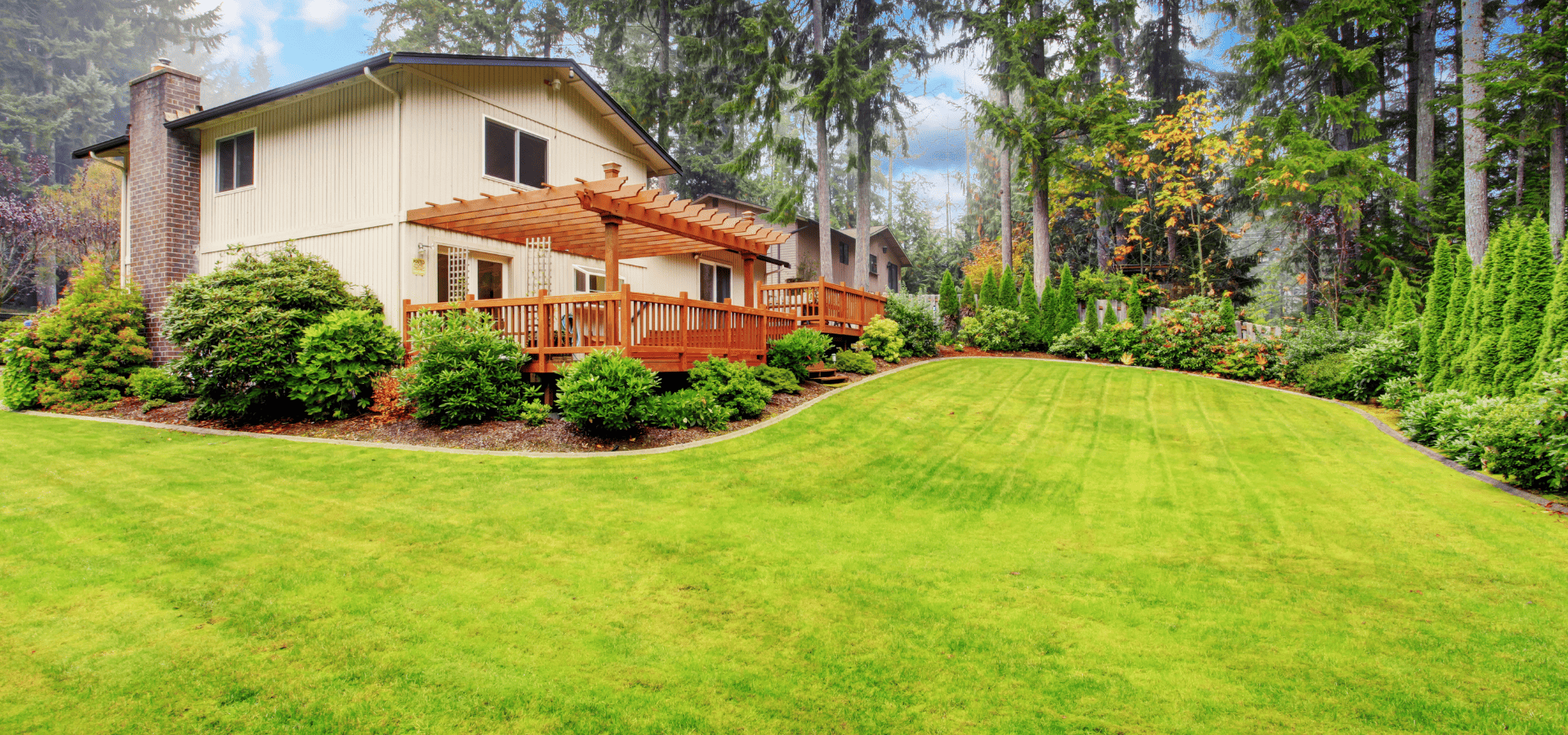
Nope. That’s one of the best parts!
Rain gardens scale beautifully. Whether you’ve got a big lot in Crescent Hill or a cozy backyard in Germantown, the core principles stay the same. Rain gardens are less about size and more about slope, placement, and their connection to a water source.
Even a 100–150 square foot garden will see serious reductions in water-logging and damage if it’s near a downspout or along a natural runoff path. Some homeowners pair their rain gardens with rain barrels, while others nestle them into ornamental beds that blend seamlessly with the modern landscaping ethos.
It’s not about squeezing one rain garden in. You don’t need to squeeze! All that matters is using the space you’ve already got in smarter ways.
How To Design A Rain Garden That Actually Works (And Doesn’t Become A Mud Pit)
A good rain garden isn’t just a divot with daisies! It’s lightly engineered with intention in order to enhance a yard and ward off the perils of precipitation.
Here’s what makes them work.
1. Catchment Area + Placement
First, find the source and establish where the water is coming from. Is it a roof? A driveway? A sloped side yard?
Your rain garden should sit downslope from the source, but no closer than 10 feet from your foundation either. (The goal is to solve runoff, not flooding your basement.)
And remember, we’re digging down! So avoid root-heavy zones, septic systems, or compacted fill. We want to pick a natural, integrated position.
2. Shape and Size
Rain gardens are typically shallow basins, about 4–8 inches deep, with gently sloped sides. Generally speaking, oval or kidney shapes for the basins are usually the best with the natural lay of the land.
As for its size, aim for 20–30% of the area draining into it. So in practice, if you’ve got a 1,000 sq. ft. roof section sending water your way, you’ll need a 200–300 sq. ft. basin to compensate.
3. Soil Composition
Louisville clay isn’t just up to the job of holding all that solo. For the rain garden basin medium, you’ll need a mix that drains well and nourishes roots.
Go with:
- 50–60% sand
- 20–30% compost
- 20–30% topsoil
That combo supports infiltration while still giving your plants the fuel they need.
4. Plant Selection
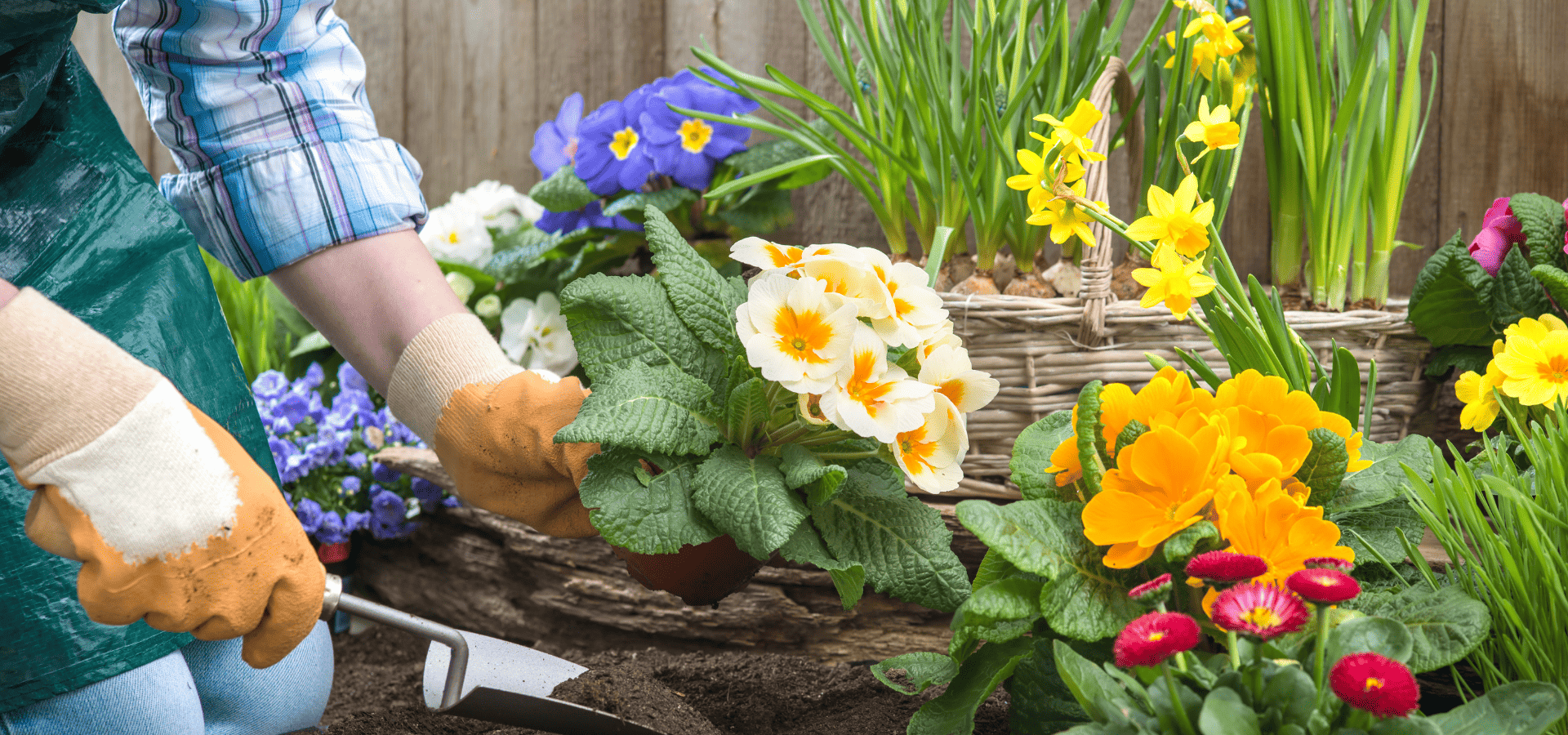
Here’s your moment to shine. A rain garden can look lush, wild, sculpted — whatever your vibe!
More important than the plant is using a tiered layout. Here’s a recommendation:
- Center (wettest zone): Iris versicolor (Blue Flag Iris), Carex stricta (Tussock Sedge), Lobelia cardinalis (Cardinal Flower)
- Mid-zone: Echinacea purpurea (Purple Coneflower), Asclepias incarnata (Swamp Milkweed), Monarda didyma (Bee Balm)
- Edges (drier): Rudbeckia fulgida (Black-Eyed Susan), Amsonia tabernaemontana (Bluestar), Schizachyrium scoparium (Little Bluestem)
While you can get away with using a lot of different plants for your rain garden, we definitely recommend sticking to natives. They’re built for Louisville’s meteorological mood swings and keep pollinators coming back for more.
5. Mosquito Prevention
Well, actually, that’s the beauty of a properly built rain garden… They won’t host mosquitoes!
Mosquitos need stagnant water for 7–10 days to breed. Meanwhile, a functioning rain garden drains in 24–48 hours. It’s essentially built-in mosquito prevention.
If you do spot standing water? Something’s off with the rain garden itself. Check the soil mix and slope — it’ll be an easy fix once you identify the issue.
Maintenance: How Hands-On Is This, Really?
Here’s the best news about rain gardens: you’ll need to show up a bit in year one.
And then not much after that.
Year One
In year one, you’ll need to helicopter-parent a touch more. Weed regularly and water new plants during dry spells.
You can also mulch to further help keep things happy. That said, use shredded hardwood or leaf mulch, but not dyed bark.
Ongoing Maintenance
By year two, your job shifts to simple, occasional check-ins. Just keep it clean: clear out debris, trim back perennials, fill plant gaps, and monitor the edges of the basin for any erosion. You only need to do this maybe 4–6 times a year, probably just saying on top of the task whenever you weed or mow the grass.
For bonus points, you can add a little compost in spring or refresh mulch as needed. But that’s it.
It’s a garden that thrives on attention — but not fuss.
Louisville-Specific Tips And Watchouts
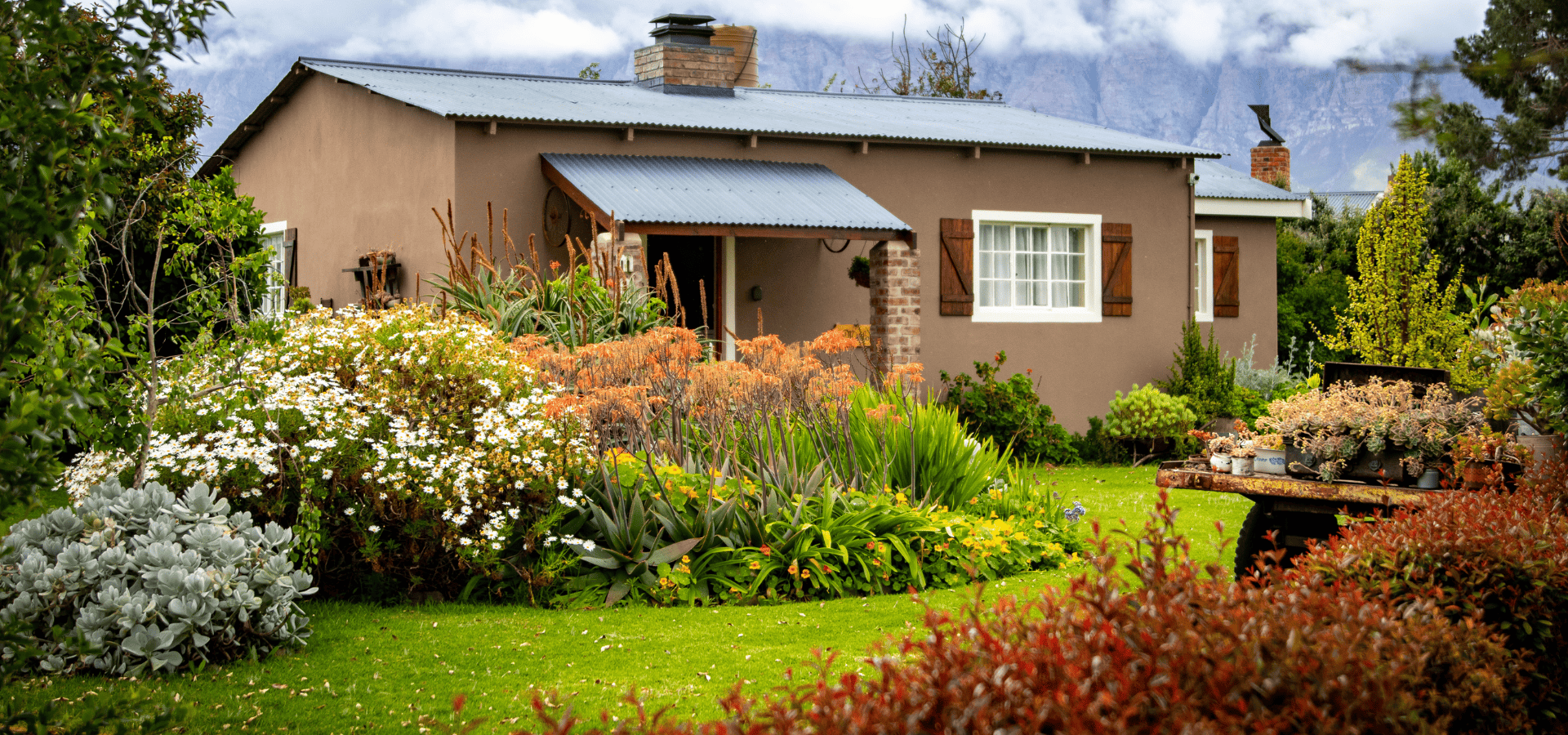
The basics of rain gardens are universal, but here in Derby City, there are a few local quirks to keep in mind. Here are some final tips if you’re tackling the rain garden renovation yourself!
- Clay runs deep. You may need to dig deeper and add more sand than you think. Don’t skimp.
- Rain hits hard. Add an overflow notch — a slightly lower edge that lets excess water exit gracefully.
- Summer is sweaty. Pick plants that can handle heat and humidity with style.
- Shade happens. For yards with big tree canopies, go for partial-shade natives like Virginia bluebells or cinnamon fern.
- And for historic homes? If you're in Old Louisville or the Highlands, double-check neighborhood rules before rerouting runoff or reshaping your front yard.
Final Take: Do You Need a Pro?
Not necessarily. It’s an option, sure. But a handy homeowner with time and a shovel can absolutely DIY a rain garden, especially with support from local groups like the Louisville MSD, which often offers guides (and sometimes incentives).
That said, if you’re dealing with steep grades, complex water flow, or erosion issues, bringing in a professional pays off. Plenty of landscapers in Louisville, KY (like us!) now specialize in this kind of sustainable design.
Done right, a rain garden isn’t just functional: it’s a statement. It boosts curb appeal and blends right into your landscape like it was always meant to be there. Rain gardens are the rare kind of project that combines the full trifecta:
- Useful
- Beautiful
- And low-maintenance.
They solve problems, support the environment, and, when planted well, look downright poetic.
In a city like Louisville, where stormwater is part of daily life, turning a runoff headache into a backyard habitat just makes sense. And if you’re even half interested in taking care of your own backyard, it’s an incredibly rewarding project to DIY and sink your teeth into.
If you’re not sure, go pro. Either way, don’t wait! Watching your lawn turn to mud every spring doesn’t have to be your seasonal cycle…
A rain garden might be the humble hero your yard’s been waiting for the next time those buckets come in.
You might also like
